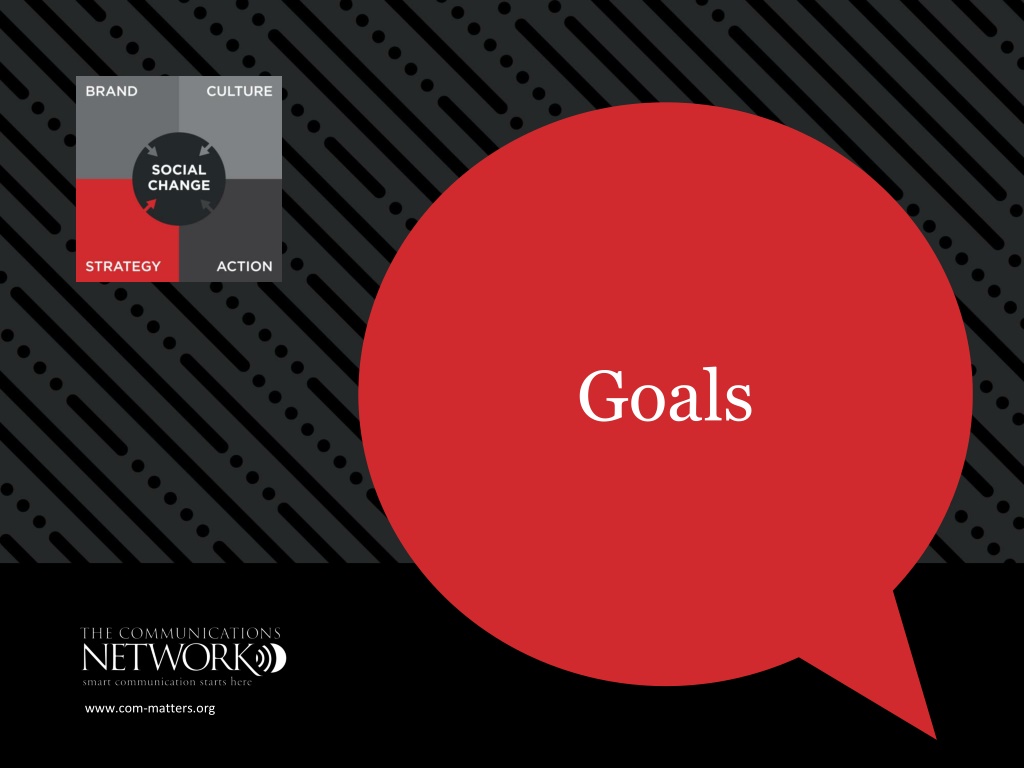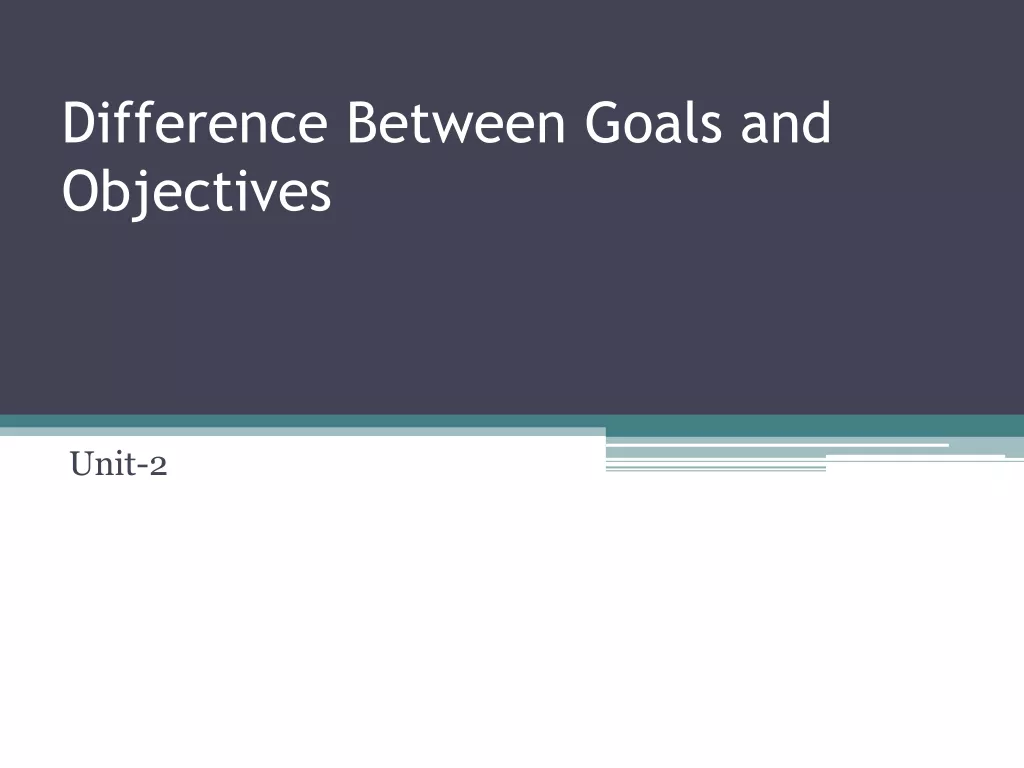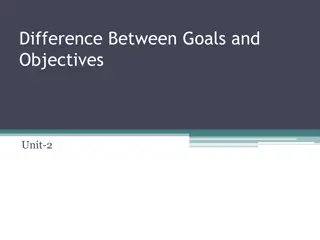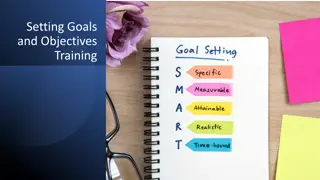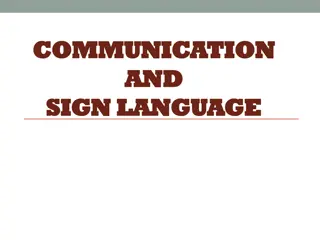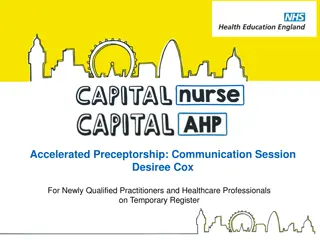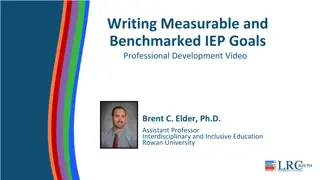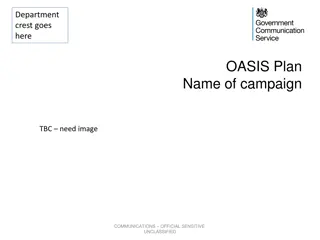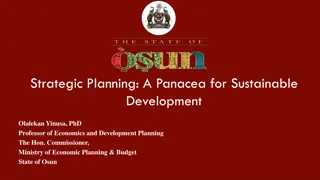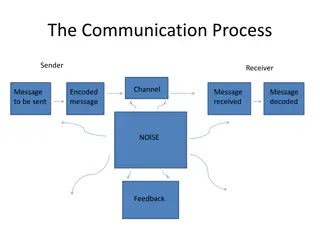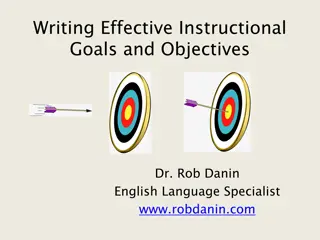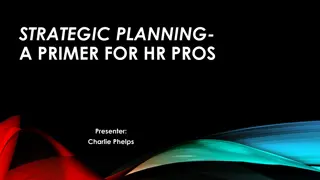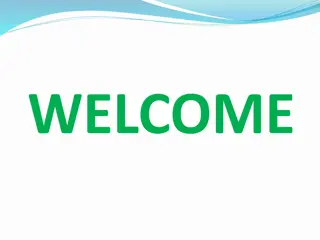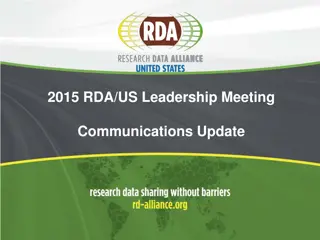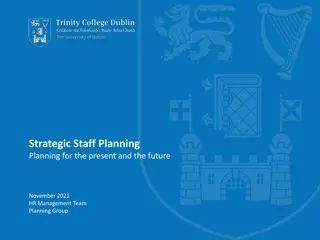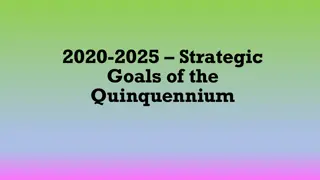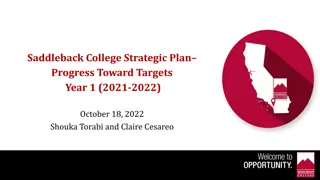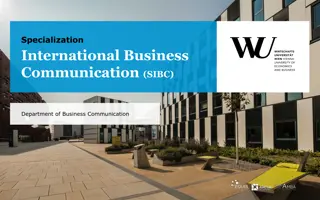Strategic Communication Goals and Objectives
Clearly defining goals and objectives is essential in strategic communication. This involves setting realistic and aligned targets, such as building communication capacity, influencing policy, and engaging public will. Communication plays a crucial role in achieving social change and programmatic success. Leaders in private foundations and nonprofits emphasize the importance of thoughtful communication strategies to drive impact. Ensuring alignment between communication goals and broader social change objectives is key for effective communication strategies.
Download Presentation

Please find below an Image/Link to download the presentation.
The content on the website is provided AS IS for your information and personal use only. It may not be sold, licensed, or shared on other websites without obtaining consent from the author.If you encounter any issues during the download, it is possible that the publisher has removed the file from their server.
You are allowed to download the files provided on this website for personal or commercial use, subject to the condition that they are used lawfully. All files are the property of their respective owners.
The content on the website is provided AS IS for your information and personal use only. It may not be sold, licensed, or shared on other websites without obtaining consent from the author.
E N D
Presentation Transcript
Goals Goals www.com-matters.org www.com-matters.org www.com-matters.org
Goals The first step in any strategic communication effort is clearly defining your objective. Think of it as a destination, a specific spot on the map. A goal statement should be simple and unambiguous. Your goal should also be realistic and aligned with your available capacity, resources and time. Think about the ultimate social change you are seeking and the ways that your communication activities will complement the programmatic work www.com-matters.org required to get you there. www.com-matters.org
Goals Goals 1 Rank of "build communication capacity of nonprofits" as a goal of communication. www.com-matters.org www.com-matters.org www.com-matters.org
Goals Goals 2 Rank of "build public will" as a goal of communication. www.com-matters.org www.com-matters.org www.com-matters.org
Goals Goals 3 Rank of "influence policy and practice" as a goal of communication. www.com-matters.org www.com-matters.org www.com-matters.org
Goals In this day and age, often communication isthe work. EXECUTIVE LEADER Private Foundation www.com-matters.org www.com-matters.org
Goals Without communication we cannot advance our public policy objectives or raise the dollars we need. Communication is central to our strategy. It is a programmatic lever that we use early and often. BOARD MEMBER Nonprofit www.com-matters.org www.com-matters.org
Goals I ve seen people who embrace communication but don't really get it. They want to make a snazzy video but haven't really thought it through. Why? What is the purpose? Who is the audience? PROGRAM LEADER Private Foundation www.com-matters.org www.com-matters.org
Goals How are your goals aligned with the social change you are seeking? www.com-matters.org www.com-matters.org
Goals How do you communicate your goals internally? www.com-matters.org www.com-matters.org
Goals How do you measure your goals? www.com-matters.org www.com-matters.org
Audiences Audiences www.com-matters.org www.com-matters.org www.com-matters.org
Audiences Define your target audiences before you select the best way to reach them. Focus on those best positioned to directly determine the success or failure of your goal. It is imperative that you clearly identify, as narrowly as possible, the people you need to reach and influence with your communication. It is important to remember that policy change is determined not by faceless, governmental cyborgs, but by living, breathing humans. Be careful to avoid the pitfall of stratifying your audiences into imprecise www.com-matters.org subsets like voters and electeds. www.com-matters.org
Audiences Audiences 50/50 Roughly the split between time spent on internal and external communication. www.com-matters.org www.com-matters.org www.com-matters.org
Audiences Audiences 9% Average percentage of communication time spent communicating with policymakers. www.com-matters.org www.com-matters.org www.com-matters.org
Audiences Audiences 22% Average percentage of communication time spent communicating with grantees. www.com-matters.org www.com-matters.org www.com-matters.org
Audiences By communicating what the foundation is supporting to our key audiences, such as policy makers and potential partners, we can amplify our impact in achieving our mission-driven goals. EXECUTIVE LEADER Private Foundation www.com-matters.org www.com-matters.org
Audiences If our efforts aren't heard by the right people, it s just as if a tree fell in the forest. Without communication our work is like that tree. No will care. COMMUNICATION LEADER Private Foundation www.com-matters.org www.com-matters.org
Audiences Communication is essential. The best evidence is of little value if it doesn t get to the people who need it, when they want it, in a form that's understandable to them. EVALUATION LEADER Nonprofit www.com-matters.org www.com-matters.org
Audiences Can you clearly define your audiences? www.com-matters.org www.com-matters.org
Audiences How do you segment your audiences? www.com-matters.org www.com-matters.org
Audiences Who is your internal versus your external audience? www.com-matters.org www.com-matters.org
Point of View Point of View www.com-matters.org www.com-matters.org www.com-matters.org
Point of View Every successful communication effort has an inherent point of view. Think of point of view as the tone, voice, style or personality for your communication. Point of view can be carefully designed and cultivated, or an organic outgrowth of your organizational style. Whatever your circumstance, the key to success is acting authentically. That means communicating with a point of view that is believable, appropriate and aligned with your organizational values. www.com-matters.org www.com-matters.org
Point of View Point of View 20% The percentage of annual expenditures that most nonprofits can spend on lobbying. www.com-matters.org www.com-matters.org www.com-matters.org
Point of View Point of View 17M The number of Ice Bucket Challenge videos that were shared to Facebook. The videos were viewed more than 10 billion times by 440 million people. www.com-matters.org www.com-matters.org www.com-matters.org
Point of View Point of View 74% Percentage of participants in a 47-country survey who said that seeing the film An Inconvenient Truth caused them to change some of their daily habits. www.com-matters.org www.com-matters.org www.com-matters.org
Point of View Foundations should be as loud as possible about issues, grantees, and grantmaking approaches that move the work forward. I think foundations should be extremely mouthy in an it's not about us kind of way COMMUNICATION LEADER Private Foundation www.com-matters.org www.com-matters.org
Point of View I have frequently heard advocates ask us to put our name on something, because policymakers find it easier to hear it from us. COMMUNICATION LEADER Private Foundation www.com-matters.org www.com-matters.org
Point of View One of the things we have been thinking a lot about lately is our voice. It's tricky trying to strike the right balance between authentic, strategic, approachable, and visionary. PROGRAM LEADER Private Foundation www.com-matters.org www.com-matters.org
Point of View What voice do you use for your communications? www.com-matters.org www.com-matters.org
Point of View Is your point of view cultivated or is it organic? www.com-matters.org www.com-matters.org
Point of View How is your message shaped by your point of view? www.com-matters.org www.com-matters.org
Messages Messages www.com-matters.org www.com-matters.org www.com-matters.org
Messages Successful messaging requires clarity and consistency. Good messages also must align with the interests and concerns most important to your audience. The best messages are those that align with an audience s value system. They are simple, factual, and provocative. Identify the values that sit at the core of the change you are seeking and zero in on them as crisply and succinctly as possible. Give careful consideration to the visual design of your messages and the www.com-matters.org pictures you use to tell your story. www.com-matters.org
Messages Messages 20 Number of times people need to hear a campaign message before it sinks in. www.com-matters.org www.com-matters.org www.com-matters.org
Messages Messages 45 Or above. The recommended Flesch score for better readability. www.com-matters.org www.com-matters.org www.com-matters.org
Messages Messages 5.4M Total number of foundation followers on Twitter (January 2013) www.com-matters.org www.com-matters.org www.com-matters.org
Messages Messages 4.4M Total number of Facebook likes for foundations (January 2013) www.com-matters.org www.com-matters.org www.com-matters.org
Messages We communicate to reach policy makers. We can have the best programs and policies in the world, but unless we translate them into language that reaches policy makers and the public, we won t be effective. EXECUTIVE LEADER Nonprofit www.com-matters.org www.com-matters.org
Messages When you say things in a clear, exciting, engaging way, people listen to what you have to say. If we want people to respond to our mission, we need to communicate that mission clearly. COMMUNICATION LEADER Nonprofit www.com-matters.org www.com-matters.org
Messages So many of the issues we work on are stuck because of the dominant narrative, and that doesn't change just by doing program work that gets results. To leverage those results to create new narratives takes strategic communication. COMMUNICATION LEADER Private Foundation www.com-matters.org www.com-matters.org
Messages How do you tie your messages to your values? www.com-matters.org www.com-matters.org
Messages What are examples of successful messages you have used? www.com-matters.org www.com-matters.org
Messages What kind of visual messages do you use? www.com-matters.org www.com-matters.org
Messengers Messengers www.com-matters.org www.com-matters.org www.com-matters.org
Messengers Choosing the right messenger is a critical step in every strategic communication effort. Without the right person delivering it, your message is just a nice set of words. Cognitive science has demonstrated time and time again that what is being said can matter far less than who is saying it. The key is to be intentional about choosing messengers who are viewed with trust, respect and the appropriate level of authority on your issue. www.com-matters.org www.com-matters.org
Messengers Messengers 50,000 Videos created and uploaded to the It Gets Better Project. www.com-matters.org www.com-matters.org www.com-matters.org
Messengers Messengers $112M Raised by the ALS Association in the Ice Bucket Challenge (as of September 2014). www.com-matters.org www.com-matters.org www.com-matters.org
Messengers Messengers 71% Percentage of foundations using social media who have not developed a formal social media strategy. www.com-matters.org www.com-matters.org www.com-matters.org
